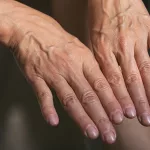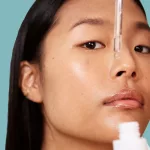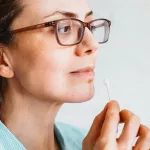Prominent veins on the hands or arms are usually a cosmetic concern rather than a medical emergency. Management options focus on reducing their visibility by closing or removing the affected veins.
Perhaps you feel self-conscious about noticeable veins on your hands, or you worry they might signal an underlying health issue.
Hand veins often become more obvious with age and can trouble some people aesthetically. In most cases, prominent veins are working normally and don’t reflect a health problem that requires intervention.
However, if you have symptoms such as pain or weakness, an underlying medical condition could be to blame.
There are treatments available to lessen their look or eliminate them outright, though these procedures are commonly not covered by insurance.
Read on to find out common reasons for bulging hand veins and what typical treatment approaches involve.

What makes hand veins stick out?
Several elements can make veins in the hands appear more prominent. Possible causes include:
- Low body fat: With minimal subcutaneous fat in the hands, veins are more visible.
- Age: With aging, skin thins and loses elasticity, revealing veins more clearly. The valves inside veins also weaken over time, which can allow blood to pool and dilate the vein.
- Genetics: If close relatives have bulging veins, you may be predisposed to them as well.
- Hot weather: High temperatures can reduce vein valve efficiency temporarily, leading to enlarged veins.
- Exercise: Frequent intense workouts may increase the visibility of veins.
During exercise your blood pressure rises, briefly pushing veins nearer to the skin. Regular exercise—especially heavy resistance training—can produce more visible veins. Repeatedly lifting weights or performing strenuous manual tasks often increases blood flow and firms the muscles, which can make veins stand out.
Occasionally, more obvious veins can stem from a medical condition, such as:
Varicose veins
Although more common in the legs, varicose veins can develop when vein valves weaken and fail to prevent blood from flowing backward. They can become enlarged, crooked, and painful.
Varicose veins are considered a medical issue. Consult a physician to ensure there’s no circulatory problem like a clot causing the change.
Phlebitis
A vein can swell if it becomes inflamed because of a hand infection, trauma (for example, from placing an intravenous catheter), or an autoimmune disorder. This inflammation is called phlebitis.
Discussing symptoms with a healthcare provider will help determine if treatment is necessary.
Superficial thrombophlebitis
Superficial thrombophlebitis is inflammation of a surface vein due to a blood clot. It can develop after injury to a vein, such as following IV insertion.
Your doctor can advise whether active treatment is recommended or if the clot is expected to resolve on its own.
Deep vein thrombosis (DVT)
Sometimes a bulging hand vein results from a clot in the deeper veins of the arm. DVT is a potentially serious condition because a clot can dislodge and travel to the heart, lungs, or brain, causing severe complications.
DVT is more commonly seen in the legs, but it can occur in the upper limbs. Signs that you may have an upper-extremity DVT include:
- neck or shoulder pain
- swelling of the arm or hand
- bluish-appearing skin
- pain radiating into the arm or forearm
- weakness in the hand
If you suspect DVT, seek emergency medical care immediately at an emergency department.
Pregnancy
Veins in the hands can become more visible during pregnancy because the body increases its blood volume to supply the fetus.
When to consult a doctor
If you have signs of DVT, obtain emergency care right away. Blood clots can travel to vital organs, and prompt treatment is crucial.
If you worry that prominent hand veins are due to an underlying condition that requires care, speak with a clinician such as your primary care physician.
Primary care providers treat many conditions and monitor overall health.
They can refer you to specialists if more focused care is needed.
Specialists who might be involved in treating vein-related issues include:
- phlebologists, who focus on vein disorders
- vascular surgeons, who diagnose and treat disorders of arteries, veins, and lymphatics
- dermatologists and dermatologic surgeons, who address skin-related concerns
Find a specialist near you
Your medical team may include several people who can support diagnosis and care.
Sometimes a specialist is required to evaluate, manage, or treat a vascular condition.
You can locate the following specialists in your area:
Treatment options for noticeable hand veins
How bulging hand veins are treated depends on the root cause. After a physician determines the diagnosis, they’ll suggest appropriate therapies.
Because prominent hand veins often function normally, treatment is commonly considered cosmetic rather than medically necessary.
That distinction usually means insurance won’t cover cosmetic procedures, so you might pay out of pocket.
Cosmetic procedures for reducing visible hand veins include:
- Sclerotherapy, injecting a chemical into target veins to scar and close them, diminishing their appearance
- Endovenous ablation therapy (laser or radiofrequency), using concentrated light or radio waves to seal veins, suitable for smaller vessels
- Ambulatory phlebectomy, removing targeted veins through tiny incisions under local anesthesia
After a provider seals the targeted vein, blood reroutes into healthier veins and the closed vessel gradually fades.
What do bulging vein treatments cost?
Out-of-pocket costs for cosmetic vein treatments vary by location, size and number of veins treated, and other factors.
If a more serious condition is discovered, your clinician will recommend an appropriate medical plan.
When bulging veins stem from phlebitis, doctors often suggest home care that may include:
- anti-inflammatory medications
- antibiotics when infection is present
- warm compresses
- elevating the affected arm
For thrombophlebitis near the skin, a physician may opt not to prescribe medications because surface clots often resolve within a couple of weeks.
If swelling is present, your doctor might suggest an OTC or prescription remedy to ease it; otherwise treatment resembles that for phlebitis.
When DVT is diagnosed, anticoagulant blood thinners are commonly prescribed. If anticoagulation is ineffective or the DVT is severe, thrombolytic (“clot-busting”) therapy may be used to dissolve the clot.
The takeaway
For most people, bulging hand veins are not a sign of a serious health issue.
If you’re worried that prominent veins indicate a medical problem, or if their appearance bothers you, schedule an appointment with your doctor. They can evaluate you and recommend treatment if needed.
If you want veins removed for aesthetic reasons, your doctor can refer you to a specialist who performs cosmetic vein procedures.
For related topics and techniques that may help with hand wellness, explore resources on hand pressure points, hand reflexology, and considerations around veiny arms.


















Leave a Reply
You must be logged in to post a comment.